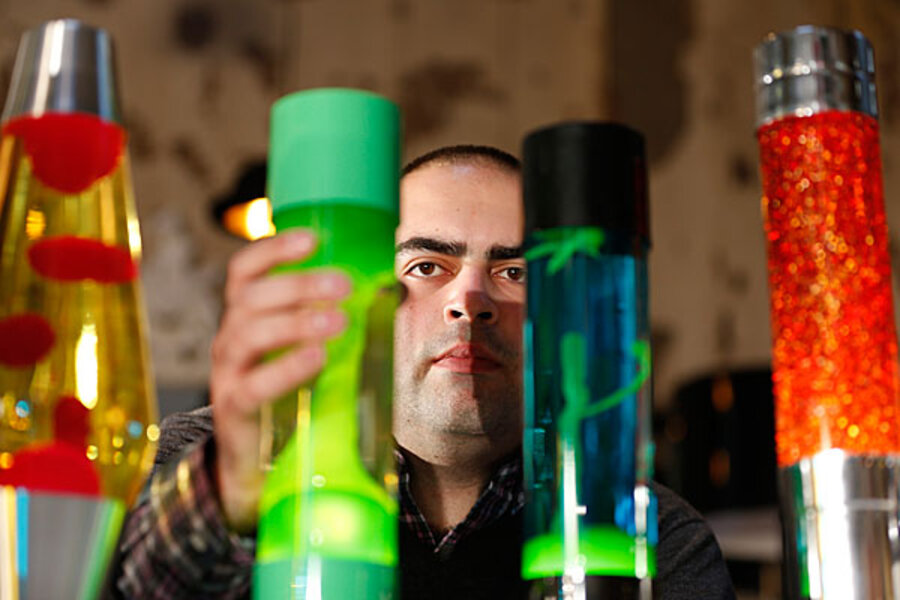Lava lamps still groovy after five decades
Loading...
| London
Call them '60s relics or hippy home accessories, lava lamps have been casting their dim but groovy light on interiors for half a century, having hit British shelves 50 years ago on Tuesday.
A British company began marketing their original creation as an "exotic conversation piece" in 1963. Since then, millions of models of the much-copied invention have been sold worldwide.
The design was created by British inventor Edward Craven-Walker, who was inspired by an odd-looking liquid-filled egg timer he saw in a pub in southwest Britain.
The former World War II pilot then spent years transforming the concept into a home lighting accessory, having recognized the potential for such an invention during anything-goes '60s Britain.
"Everything was getting a little bit psychedelic," said Christine Baehr, the second of Craven-Walker's four wives. "There was Carnaby Street and The Beatles and things launching into space and he thought it was quite funky and might be something to launch into."
Britain's "Love Generation" saw an affinity between the fluorescent lava flow's unpredictable nature and the easy-going, drug-induced spirit of the decade.
Craven-Walker's first model, the Astro Lamp, also reflected the technological innovation and imagination of the time, shaped like a sci-fi rocket. Soon other models, such as the Astro Mini and the Astro Nordic, emerged from Craven-Walker's Crestworth company, building on his original concept.
Baehr recalls a memorable moment when they were told that Beatles drummer Ringo Starr had bought one of their lamps. "That was a great, 'Ah we've made it,' moment," she said.
Despite the decline of British manufacturing, with numerous well-known brands dying or moving to countries with cheaper labor costs, lava lamp making company Mathmos has remained at their factory in southwest Britain still employing Craven-Walker's tried and tested formula.
"I think it's really special to manufacture something that's been invented and made in Britain, in Britain for 50 years," said Cressida Granger, who became involved with Crestworth in 1989, renamed it Mathmos in 1992 and gained sole ownership in 1999.
Granger went on to enjoy a second wave of success for Craven-Walker's invention during the 1990s, as a new generation of consumers, obsessed with retro British trends, lit their rooms with '60s lava lamp designs.
Craven-Walker, whose other enthusiasms included nudism, died in 2000.
Lava lamps are based on two liquids of slightly different density which will not mix. The heavier liquid sinks to the bottom, but when heated by the lamp light its density decreases and it floats to the top.
His invention has had roles in music videos and on television, having originally appeared in popular British television shows during the '60s such as "The Prisoner" and "Doctor Who."
"I think it's the motion within the lamp," said Anthony Voz, a collector of Mathmos products. "The way that it flows, how it's anti-repetitive, how it's a mixture of light and chaos blending together. It kind of pulls people in and before you know it, you've spent 15 minutes looking at it."
Mathmos' lava lamps are distinct from the products of a U.S. company, Lava Lite LLC, which said it holds trademarks on Lava, Lava Lite and the design in the United States and other countries.
[Editor's note: In the original story, The Associated Press erroneously reported that exclusive U.S. rights to manufacture the lamps are held by Haggerty Enterprises Inc.
Cressida Granger, owner of Mathmos Ltd., the British-based company founded by lava lamp inventor Edward Craven-Walker, said that U.S. manufacturing rights were granted by the Craven-Walkers in 1966 and expired in 1985.
Lava Lite LLC, based in Illinois, acquired Haggerty's Lava World International business in 2008. The company said Lava, Lava Lite and a lamp design are registered as its trademarks in the United States, the United Kingdom and elsewhere.]
Copyright 2013 The Associated Press. All rights reserved. This material may not be published, broadcast, rewritten or redistributed.







